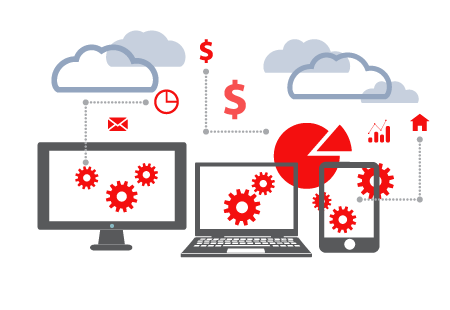Topics
Top 10 Priorities for CIOs

CIOs tend to have a lot on their plate, especially in today's technology-laden business environment. They are constantly putting out fires that could potentially ruin their company and soil their reputation. Year after year, concerns arise within the industry that are not only important but often a priority for many CIOs. Here is a list of the top 10 priorities that affect a CIOs life the most.
1. Security
Cyber security has been a hot button issue among CIOs and other leadership positions for years. This addresses everything from risk assessment and governance to security infrastructure, data protection, training and awareness, and managing insider threats. A breach in company security could mean detrimental set backs or even complete company failure. Costs associated with big data breaches can escalate into the ten of millions of dollars; often from an incident that could have been prevented.
2. Cloud
Cloud technology, while still a relatively new concept, it is quickly picking up steam. Most, if not all Fortune 500 companies deal with the cloud and often have departments dedicated to it. This stretches from cloud strategy to proper selection of service and deployment models. Many businesses are weighing security, privacy and data ownership as they navigate public cloud, private cloud and on-premises options.
3. Mobility
Through devices, mobile technology and applications, employees are able to gain more and more information and in most cases, work more effiently and effectively. CIOs are now trying to find more ways to keep up with the ever-changing technology and provide more useful mobility options for their employees.
4. Strategic IT Planning
This is the alignment of business and IT. CIOs find themselves planning a lot of their business's strategies and goals around their IT capabilities. Short and long term goals must be evaluated and measured against the readiness of company's IT department. The two sides must usually work in tandem to ensure a firms success.
5. Talent Management
Companies everywhere are challenged with finding talented, qualified employees and technology companies are no different. Highly skilled information technology specialists are in high demand and as a result, CIOs are finding it harder and harder to train and retain these employees.
6. Budget and Cost Control
Tight budgets are nothing new for many CIOs and their IT departments. While spending across the industry is rising, many CIOs are looking for ways to cut costs by outsourcing their IT services to other companies; using services such as Remote Monitoring and Maintenence to manage their customers.
7. Wireless Connectivity
CIOs are painfully aware of the fact that information of any kind can be accessed anywhere. This is due in large part to WiFi which has become a necessary factor in people's lives. Thanks to WiFi and various other connectivity advances, employees are able to work outside of the office and provide value even when in a remote location.
8. Recovery
Catastrophic, life-changing events such as Hurricane Sandy or 9/11, while rare, do indeed occur and businesses must be ready. Companies and their CIOs need to put a technology disaster recovery plan in place to prepare for such events. Overcoming such set backs are challenging but important to showcasing the strength of the business and its dedication to its customers.
9. Managing Customer Satisfaction
For a CIO, ensuring that their employees are properly onboarded and trained is a legitamte concern but satisfying the customer is key. Most, if not all efforts around a company's technology infrastrure should be geared toward providing a better experience for your customer. Customer satisfaction or the lack thereof is one of the leading causes for a company's failure.
10. Transform Business Processes
Because many industries are going digital, CIOs are tasked with making sure their business is technologically sound. This has two components: digitizing processes that are already in place, i.e., adding an online version of a physical process, and intertwining physical processes with a digital aspect, something similar to the concept of omnichannel planning.


